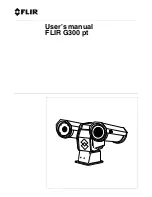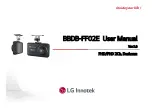
TC620-PID
Page 114
CC status
The receiver relays are normally open (fail-safe). Each CC input is sampled 100 times per
second. Changes are transmitted directly, so overall latency of the contact closure signals is <20
ms. To confirm, the actual contact closure status is transmitted every 100 ms; there is no further
forward error correction on these signals.
Alarms
If a contact closure signal is to be transmitted to a PC, the software requesting it can open a
contact closure stream from the TC620-PID, which will carry the CC information. At the opposite
end of the link (a PC running the software), the contact closures may be regarded as, and even
named alarms, but those ‘alarms’ are not necessarily related to module alarms.
In the module, closing a physical CC input will change the payload of the existing stream, as
described above, and additionally cause a module alarm saying the input status is ‘closed’. A
notification about the latter module alarm is also sent out over the network and can be caught
separately by application software. Alternatively, application software can poll the TC620-PID
and check for the module alarm. Stream alarms (link alarms in the modules, at both link ends)
become active if the link fails.
15.2
Input # Settings
CC Streams > Input 1 Settings
Item
Description
Operational mode
Normal
Direction.
Invert
Force active
Always on (e.g. for testing purposes).
Force inactive
Always off.
15.3
Make contact closure connections
Making CC links is similar to making video/data/audio links, but without additional interface
configuration.
To make a contact closure connection
On the Transmitter side, fill in a destination IP address and port number for each codec you
want a CC stream to go to, and then enable the stream.
On the other side of the link (i.e. the codec you want to receive the CC stream), fill in the
source IP address, the local port number (the same as specified for the transmitter), and
then enable the receiver.
Note:
Clearing an Enable check box disables the transmission or reception of the stream, not the
contact input or output itself. If the stream is disabled, the contact can still be controlled and
read using MX software or the HTTP API.
















































